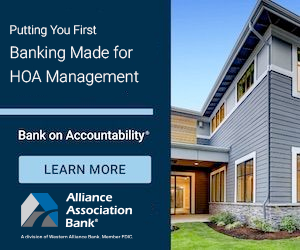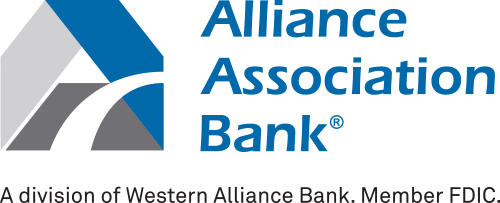HOA CC&Rs: Covenants, Conditions And Restrictions

The HOA CC&R is one of the most important governing documents in a community association. It governs the planned community and dictates the obligations of both the HOA and homeowners. The rules help preserve property values and foster a pleasant living environment.
Browse By Category
Sign up for Our Newsletter
The HOA CC&R is one of the most important governing documents in a community association. It governs the planned community and dictates the obligations of both the HOA and homeowners. The rules help preserve property values and foster a pleasant living environment.
What Does CCR Mean?
What is a CCR? The CC&Rs (also known as the CCRs, CCNR, or HOA covenants) are the declaration of covenants conditions and restrictions of a community. They outline property use restrictions, maintenance obligations, rule enforcement mechanisms, dispute resolution methods, assessment obligations, insurance requirements, and lender protection.
Many HOA covenants and restrictions impose architectural guidelines on homeowners. These guidelines might limit fence height or dictate the exterior paint colors homeowners can use. Apart from architectural standards, the HOA CC&R might also include use restrictions such as pet and rental restrictions.
While the CC&Rs may seem restrictive to some, they exist to aid every HOA’s goal: to preserve or enhance the community’s property values. This is because neighborhoods with a semi-uniform outward appearance are typically more pleasing to the eye. They attract more buyers, which in turn, raises home prices.
Common Examples of CC&R Restrictions
An HOA CC&R can include various rules. The most common examples include the following:
- Architectural Standards. The CC&Rs govern everything from exterior paint, shed installations, fence heights, and even the kinds of materials you use for construction projects.
- Property Maintenance. HOAs may mandate certain property maintenance activities. For example, many communities require homeowners to mow the lawn or maintain the exterior paint.
- Home Decorations. Decorations, whether permanent or temporary, may be regulated by the association to preserve the community’s aesthetics.
- Pets. HOAs may ban pets altogether or simply include pet restrictions. For example, a community may disallow livestock or specific dog breeds. In some cases, they might also require vaccination or limit the number of allowable pets.
- Parking Rules. HOAs may designate parking to specific areas or prevent overnight guest parking. In many single-family home communities, homeowners must park their vehicles in the garage.
- Assessments. The CC&R may delineate the process for collections, how they are computed, and when they must be paid.
- Unsightly Objects. Unappealing items, such as trash bins, clotheslines, and utility meters, may need to be hidden from view.
The CC&Rs and HOA Dues
HOA CC&Rs often outline the community’s assessments, including the types of fees, how special assessments are levied, and fines for nonpayment. Community members may need to pay the dues on an annual, monthly, or quarterly basis.
Penalties for Violations
All of the governing documents, including the HOA’s CC&Rs, are legally binding on the community residents. After all, homeowners automatically agree to community rules the moment they close on a home. Thus, noncompliance carries certain penalties including, but not limited to, the following:
- Monetary fines
- Suspension of rights and privileges (e.g. the use of a community gym or pool)
- Forced compliance (e.g. the HOA might fix the problem and send you a bill or ask you to give up an unauthorized pet)
In extreme cases, homeowners associations may even file a lawsuit against the homeowner for violations. When it comes to non-payment of dues, HOAs may also file a lien on homeowner property and foreclose the home to pay for delinquencies.
How Do I Find CC&Rs for My Property?
Homeowners should receive a copy of the HOA CC&R when they purchase the home. However, should they fail to obtain the documents or lose their copy, they can also find them by:
- Contacting the Real Estate Agent. New homeowners may ask the real estate agent or seller for a copy of the CC&Rs.
- Asking HOA Management. Communities have board members or HOA managers residents can ask to request a copy of the CC&Rs.
- Searching Public Records. The CC&Rs are publicly recorded in some states. Consider visiting the local county recorder’s office or website.
- Looking Through the HOA Website. If your community has one, the HOA website often posts all the neighborhood’s important documents, including the CC&Rs.
- Attending an HOA Meeting. Homeowners may ask the board members or other homeowners for a copy of the covenants at an HOA meeting.
- Asking Neighbors. Sometimes, a simple request to a friendly neighbor is all it takes to obtain a copy of the HOA documents.
CC&Rs vs Bylaws vs Rules: Understanding the Difference
Homeowners do not always understand the difference between the CC&Rs and the community’s bylaws or rules. Often, they simply think of the governing documents as one single piece of documentation. While they are right in categorizing these all under the HOA governing documents, they are not all the same.
Content and Purpose
The key difference between the CC&Rs, bylaws, and rules is in their content and purpose. Firstly, the HOA covenants contain the community’s use restrictions, obligations, and assessments. Meanwhile, the bylaws primarily establish how the community operates. The bylaws might include rules regarding board elections, nominations, director terms, and meeting requirements.
Many people confuse the CC&Rs with the community’s rules and regulations. It’s a common misconception since the CC&Rs do outline the rules of the neighborhood. However, the rules & regulations are simply “catch-all” records for everything not covered by the bylaws and HOA CC&R.
Oftentimes, the rules and regulations further expound on the community’s CC&Rs and Bylaws. They also include details too minor for the HOA covenants. For instance, the CC&Rs may allow community members to use the pool, but the rules & regulations will indicate specific pool hours.
Amendments and Changes
The CC&Rs, bylaws, and rules are initially defined by the developer. However, community residents and board members can change the first two through amendments. This often requires a majority vote from the community. It can be a lengthy process that takes months to complete. Meanwhile, changes to the rules and regulations do not need a community vote. The board members are usually allowed to vote among themselves to update these rules. However, they may need to send notice and consider resident feedback.
Hierarchy
The CC&Rs, bylaws, and rules have a hierarchy to them. Generally, the community’s declaration (CC&Rs) take precedence over the other governing documents. The CC&Rs are followed by the articles of incorporation, bylaws, and finally, the rules and regulations.
Frequently Asked Questions
When Should HOAs Update the CC&Rs?
It’s advisable to review the CC&Rs every 4-5 years. Depending on how the community evolves, the board may make changes either sooner or later. Ideally, the HOA should meet the community’s needs and stay competitive with other neighborhoods.
How Do HOAs Amend the CC&Rs?
The CC&Rs themselves may outline the amendment process. However, state law may also indicate how the community can make changes to the covenants. Typically, the HOA CC&R requires a supermajority or majority vote from the community.
A Community’s Guiding Document
The HOA CC&R serves as a guide for the community residents. It outlines both the HOA and residents’ responsibilities and expectations. All of the members must abide by them to create a peaceful community.
Does your community need assistance with CC&R enforcement, compliance, and amendment? An HOA management company may help. Find a professional management company through our online directory!
RELATED ARTICLES:
- Can Homeowners Run A Home Business In HOA Homes?
- State Laws On Homeowner Rights To Review And Copy Governing Documents
- What If An HOA Violates Its Own Rules? What Can Homeowners Do?
Trending Now
Related Article
Sign up for Our Monthly Newsletter
Sign up below for monthly updates on all HOA Resource
















